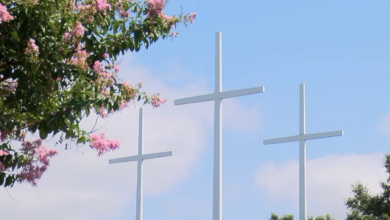Traditional posadas return to Mexico after year-long hiatus due to pandemic

By Cristina Sanchez Reyes
Mexico City, Dec 19 (EFE).- The traditional “posadas,” one of the most popular December festivals in Mexico, have returned with considerably greater force during the 2021 holiday season after last year they were substantially curtailed during the obligatory lockdown due to the coronavirus pandemic, but now they are providing hope to Mexicans despite the threat of the fast-spreading Omicron coronavirus variant.
“These types of events are a tradition. They’ve always spurred the economy for everyone, for the people for whom they provide work. We hope that this year it will be so and people are working to support us,” Isabel Soto Martinez, a Mexico City businesswoman, told EFE.
Soto Martinez is part of a festival organized by Mexico City’s Cuauhtemoc district city hall that this year revived the ancient posada tradition, which is celebrated for nine days starting on Dec. 16.
For her, as for millions of Mexicans, the reactivation of this kind of celebration is a breath of fresh air after more than 18 months of confinement and the drumbeat of bad news regarding the coronavirus, which in Mexico has caused almost four million infections and taken the lives of 297,835, according to the official count.
Last year, “I spent (the holiday) at home, a little more bored without all these festivals like the fair, the Three Kings, photos, the traditions each year,” said Jesus, who owns his own business and each year takes part in all these activities.
He said that 2020 was “a little more depressing,” since he was unable to leave home “and everything you saw on television was tragic things about the pandemic.”
Alejandro Tovar, a historian and lecturer at the Monterrey Institute of Technology, Santa Fe Campus, told EFE that the Christmas festivals are an expression of “syncretism,” since they unite elements of the country’s original peoples “as well as Western and even Asian culture.”
He said that although in Mexico there is still an historic tradition of celebrating Christmas on Dec. 25, the December festivals and ceremonies last all month.
“This can be seen with greater intensity starting on Dec. 12, the day on which the apparition of Our Lady of Guadalupe is commemorated and it really starts up on Dec. 16, when the traditional posadas begin,” he said.
The posadas, which began with the Spanish conquest, include two groups of people – it doesn’t matter how many participate – with one group outside the home and the other inside.
The ones outside represent the Virgin Mary and Joseph and they come around singing Christmas carols asking those inside the house for asylum, with the latter answering them with additional songs of the season.
The ceremony is conducted in this way to represent the traditional situation in which Mary and Joseph went door to door asking for shelter prior to the birth of the Baby Jesus.
After the caroling, the posada participants break a piñata – clay jars filled with fruit and lined with colored paper – which according to tradition are crafted in the form of a seven-pointed star, with each of the points representing one of the cardinal sins.
The people, one by one wearing blindfolds – symbolizing acting by faith – try to break the piñata with a stick that, in turn, represents God.
The posada celebration concludes with a party, at which the hosts offer their invited guests assorted plates of food, along with warm punch made with seasonal edibles, including sugar cane, apples, prunes, guayabas and other fruits.
According to Tovar, the posada tradition has been celebrated for two centuries, although it started out being called the “Christmas carol festival.”
After the gatherings and parties, gifts are distributed to the indigenous peoples during the winter festival of Panquetzaliztli heralding the arrival of Huitzilopochtli, the Aztec god of war.
The Augustinian faithful replaced the image of the Aztec god with the figures of Joseph and Mary.
During the posadas period, many of Mexico’s streets are adorned with colorful lanterns and all sorts of other Christmas decorations.




